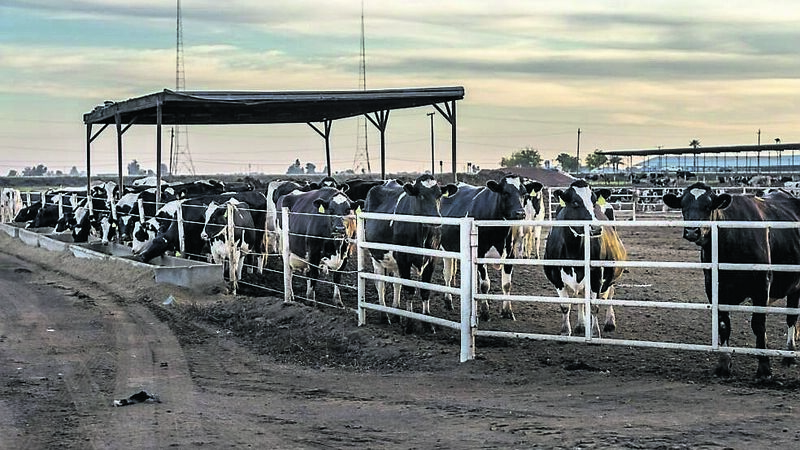Irish farmers look to low-cost grass as grain prices approach seven-year high

Rising animal feed prices across the world are putting pressure on profitability on livestock farms.
But Irish beef and dairy farmers will hope that their reliance on grass rather than grain will help them, if feed prices continue to climb.
For UK dairy farmers, the milk price to feed price ratio had dropped to 1.12, its lowest level since July, 2016.
When the ratio fell to a similar level in the spring of 2019, UK milk production declined, and a repeat of that is now predicted, if the relationship between grain and milk prices status at current levels.
If this happens across the EU, the falling milk supply will help to keep dairy markets strong. Such trends could also boost beef prices, if the supply of beef falls due to rising feeding costs.
Meanwhile, profitability is also falling on the huge US dairy farms which have been pumping out more and more milk year after year.
Cheap feed has been a major component in the ability of US dairy farms to consistently increase milk production from 73.7 million tons in 1999 to 101.2m tons in 2020.
And more and more of this is exported onto world markets in the form of dairy products, increasing from 3.6% in 1996 to an all-time high of 16% of milk solids produced in 2020.
But 2021, with grain and oilseed future prices at their highest levels since 2014, could be the year when falling milk prices and rising feed costs bring an end to that trend.
The USDA’s December milk-feed ratio was at 2.18, down from 2.58 in November, and the lowest since May 2020.
The index is based on the milk price compared to the price for a dairy ration consisting of 51% maize, 8% soybeans, and 41% alfalfa hay.
Falling milk production in the US and the other grain- dependent dairy countries could significantly reduce their dairy production and exports, which could bring price gains for Ireland’s export-dependent dairy sector, which our livestock farmers, dependent more on grass than on grain, can take advantage of.
That is likely to happen because the bullish outlook for global grain markets, due to relatively tight supply, could leave grain prices high for months.
Unfortunately, for the more intensive Irish livestock farms, producing pigs and poultry, etc, there is no upside in rising grain prices, particularly for our pig farmers, also facing pressure in the form of declining farm-gate prices for pigs.
The outcome will depend many international grain demand factors determining feed prices, and on crop farming conditions, especially in North and South America.
Unexpected events could disrupt grain markets, like the port strike in Argentina which affected soybean supplies worldwide in january. That was settled, but trucker strikes have followed in Argentina and Brazil.
The 25% EU tariff on beet pulp and molasses imports from the US, since November was another unexpected market shock. On the plus side, the UK has been awarded “third country” listed status to be allowed to export to the EU, but Brexit challenges remain.
In January, the European Commission approved five genetically engineered crops (three maize and two soybeans) and renewed the authorisation for three maize crops used for food and feed.
This eased worries for the EU animal feed industry, after an approvals logjam had built up due to Covid-19 and suspension of EU standing committee meetings.
According to a recent IFA grain market report, feed demand is strong, particularly in the dairy and sheep sectors, but with beef demand back since December.
Recent price cuts by processors could further depress beef feed demand, if finishers opt to wait for grass.
IFA says most of the native grain is now accounted for, which will leave stores empty heading into the next harvest, and Irish livestock farmers even more dependent on world grain market trends.
Any major weather events or interruption to spring plantings in the northern hemisphere will push up forward prices, noted IFA, which said the EU malting barley market has remained strong, due to increased demand for feed barley.
IFA also noted that increased taxes on Russian grain exports, and Chinese buying, have boosted wheat prices. As for soybean and rapeseed, IFA said South American harvest concerns and Chinese demand support prices.
In the bigger picture, rising grain and oilseed prices have also given rise to concerns that food inflation will threaten the populations of poorer, import-reliant countries.









